Long before Santa Claus, there was Saint Nicholas, the beloved folk hero of early Christianity who traveled across the world every December bestowing gifts upon all the good boys and girls.
Unlike Santa Claus, the tale of St. Nick was born of a real man, a Bishop from the early first century who was notorious for his generosity, charity, and gift-giving, traveling the countryside helping those in need and spreading joy.
When he died on December 6th, the day was marked with a festival of goodwill, known as St. Nicholas Day, that continued for many centuries and eventually evolved (along with the Pagan festival of Yule) into the Christmas we know and love today.
While St. Nicholas himself may have aged out over the centuries, especially in the New World, he has recently returned to the public eye. Not because of the man he was, or the legend he became, but for a much more sinister reason: the dark company he kept.
We’re talking, of course, about the veritable yang to St. Nick’s yin—Krampus.
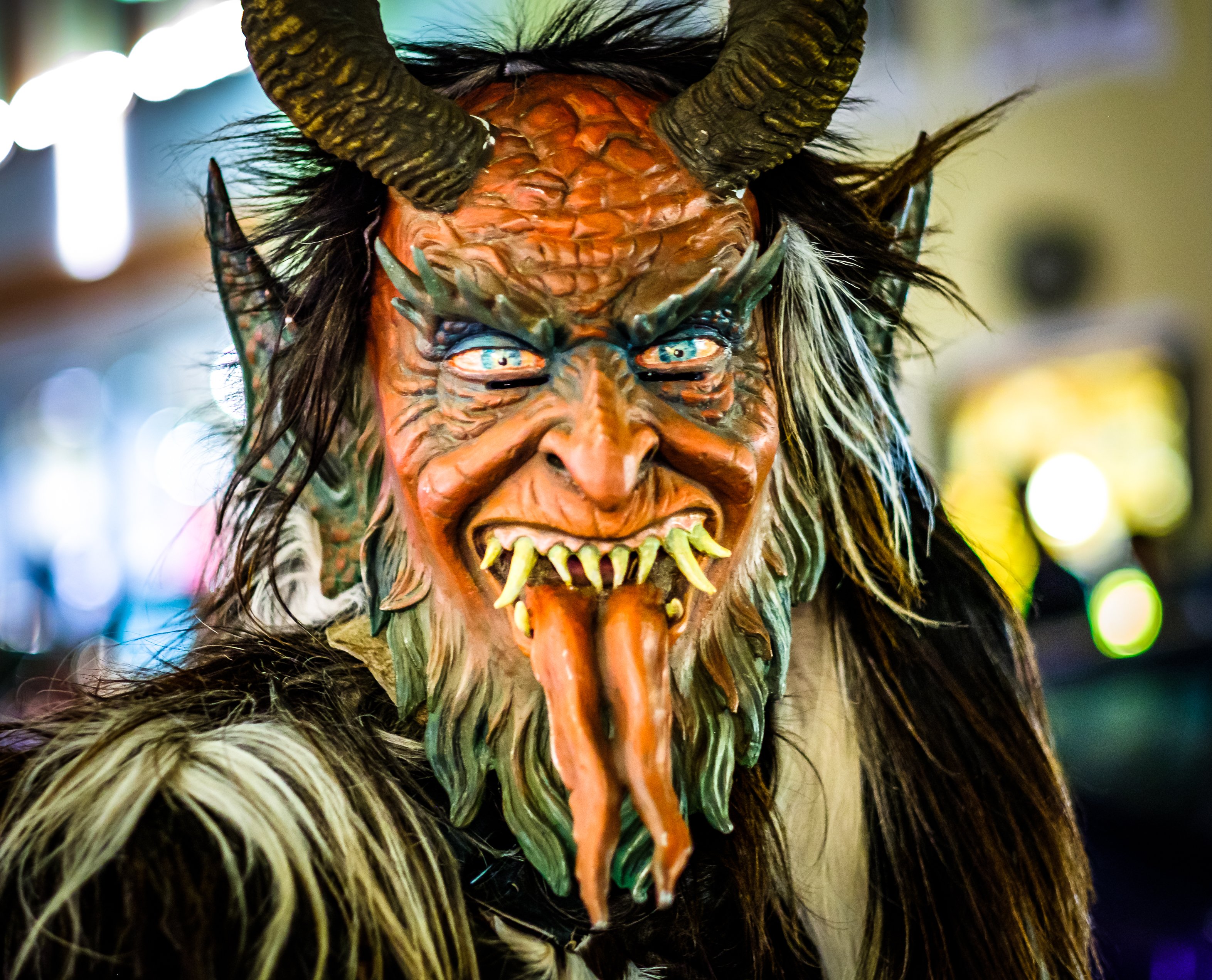
Krampus, whose name is derived from the German word krampen, meaning claw, is a satyr-like figure of ancient folklore who has long terrorized central Europe, accompanying St. Nick on his travels and violently sifting the naughty children from the nice.
He is often portrayed as a devil-like figure with black or dark brown hair covering his body, cloven hooves, goat-like horns, razor-sharp fangs, and a long, lolling tongue hanging from his mouth.
For every good boy and girl that Saint Nicholas rewards, there are dozens of others who don’t make the cut, left for Krampus to be whipped with a birch switch, or even stuffed into his sack and carried away to his lair be tortured and eaten.
His image has evolved over the years, getting less goat-like and more devilish, but his evil intentions have remained the same, providing the motivation children need to behave around the holidays, and the punishment they deserve if they fail to do so.
Many believe that the origin of Krampus predates Christianity, and there is no doubt that there are some interesting parallels between his lore and that of other Pagan figures, but it isn’t until Saint Nicholas and his holiday that Krampus really started to make an impression.
Looking back on a long history of central European folklore, many of which contain harsh, moral lessons for children, usually under the threat of unrestrained violence by horrific figures, it is not hard to understand how someone like Krampus came to be.
With St. Nick starting to make his rounds every December 6th, bringing candy and dried fruits to all of the good boys and girls, it’s only natural that a balance should form. After all, the only thing more motivating than rewarding good deeds is punishing bad.

But, as Krampus became entangled with St. Nick and Christianity in the Middle Ages, the holiday taking on more and more traditional dogma, the image of Krampus himself began to change, becoming less animalistic and more akin to the representations of the devil himself.
His horns got longer, his face more human-like, and even his tongue began to hang low from his mouth like representations of Satan in the good book. What once was a birch switch became a whip, and what was once his lair in the woods where he feasted on children became an eternity of damnation in hell itself.
In fact, the more Krampus was tied into Christian dogma, and the more satanic he became, the less welcome he was at the festivities. The superstitious people who once embraced him as a folk anti-hero started banning him completely from the holiday for fear of tempting the Devil himself.
Eventually, Krampus would fall off completely in the modern world, celebrated only in remote villages that still held onto the old ways. And as St. Nicholas Day evolved into Christmas, and the holiday took on more of its kid-friendly lore and traditions, Krampus would almost disappear completely.
Almost.
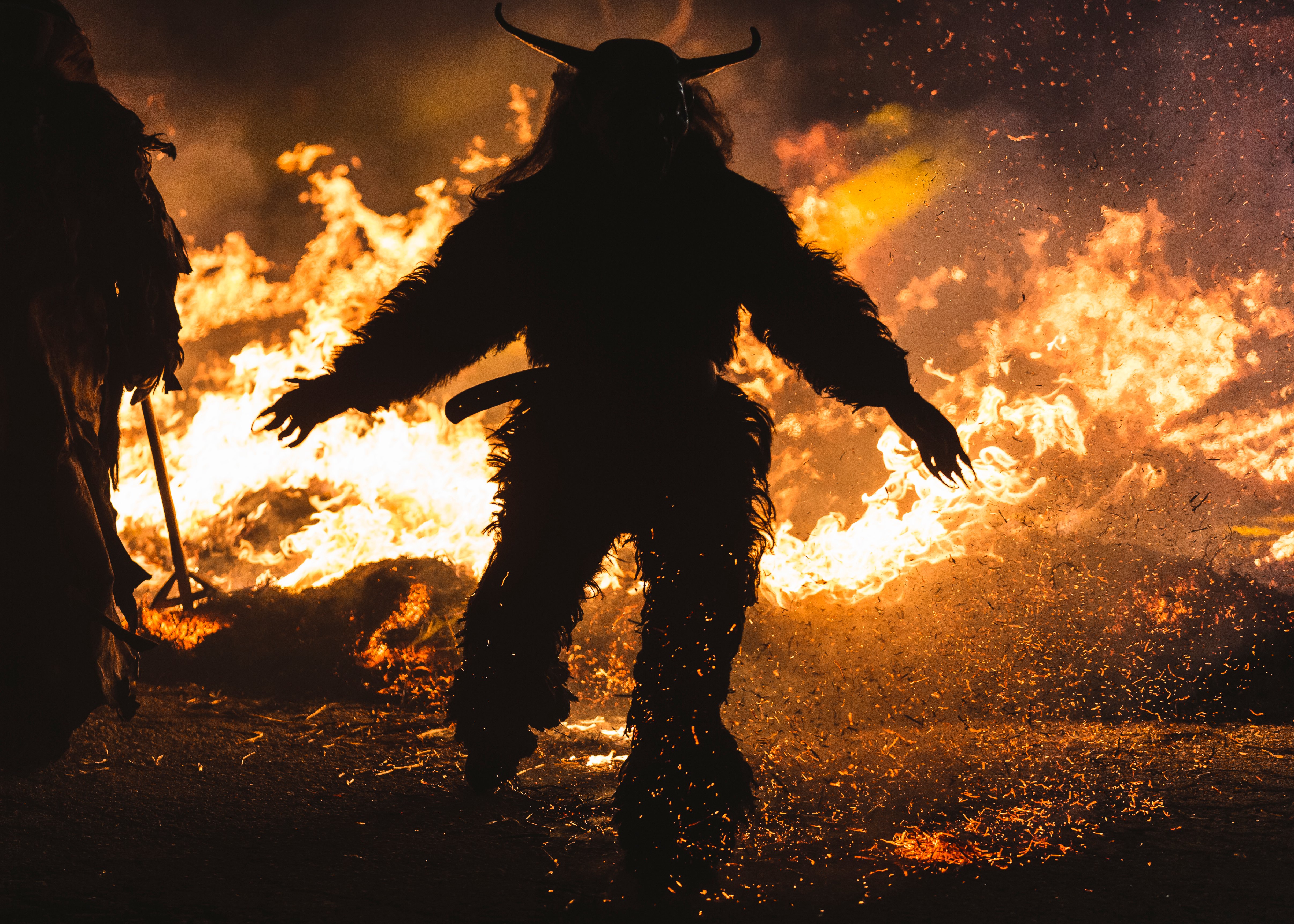
For many centuries, the legend of Krampus stayed within his boundaries, remembered in small corners of Europe but otherwise unheard of in most of the world, America included. But in the past decade, there has been a resurgence of Krampus culture that has even made its way to the western hemisphere.
So much of one, in fact, that it is difficult to find someone who has not heard of Krampus, either from one of the many movies made in the past few years, his appearance in popular T.V. shows and cartoons or from being featured on countless pieces of holiday swag.
Somehow, Krampus has made a comeback. Whether it is a response to the over-commercialization of Christmas, its descent into holly-jolly extremism, or just the planets aligning in ways we haven't seen since the days of the Pagans, Krampus has now become a part of Christmas.
People around the world have returned to the old ways, dressing up in costumes, holding parades, handing out holiday cards, and doing everything they can to bring a little darkness back into a white Christmas that has long overstayed its welcome.
And it all starts on Krampusnacht.
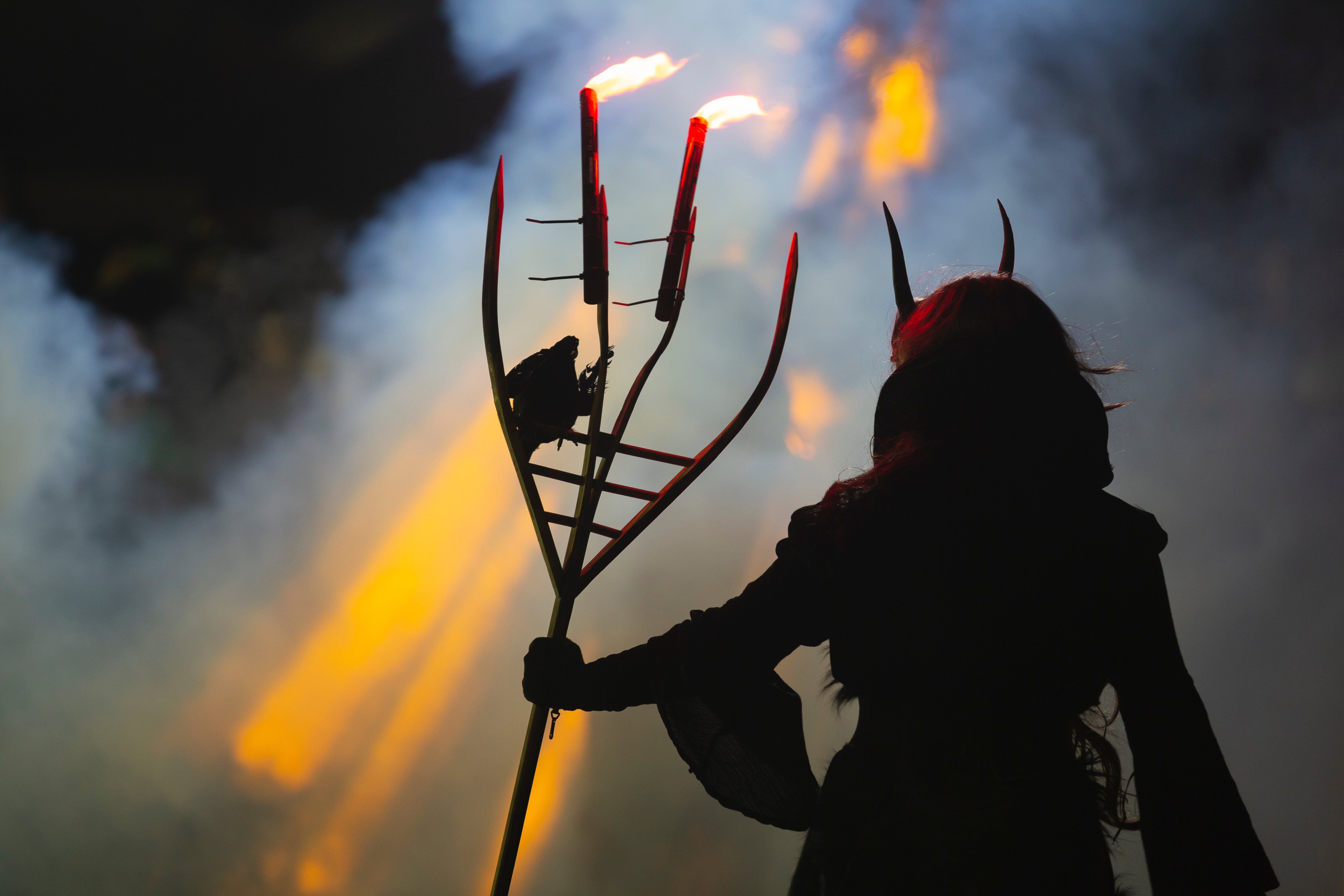
December 6th may have been the day for Saint Nicholas and his selfless endeavor to put a smile on the face of children everywhere, but the night before has long been a night of mayhem, merriment, and moral ambiguity—a night for Krampus.
Known as Krampusnacht, or Krampus Night, the eve of December 5th is when Krampus stalks the streets, bringing mischief to townsfolk and punishing every naughty child in his wake.
In the past, it was a time for bedtime stories, a warning to excited children that they must behave one more night if they wish to be visited by Saint Nicholas in the morning, and not carried away in Krampus’ sack to be tortured and eaten.
Now, the tradition has returned in many central European cities, especially among the young, who have resurrected Krampus Night and filled it with celebrations, festivities, and customs new and old.
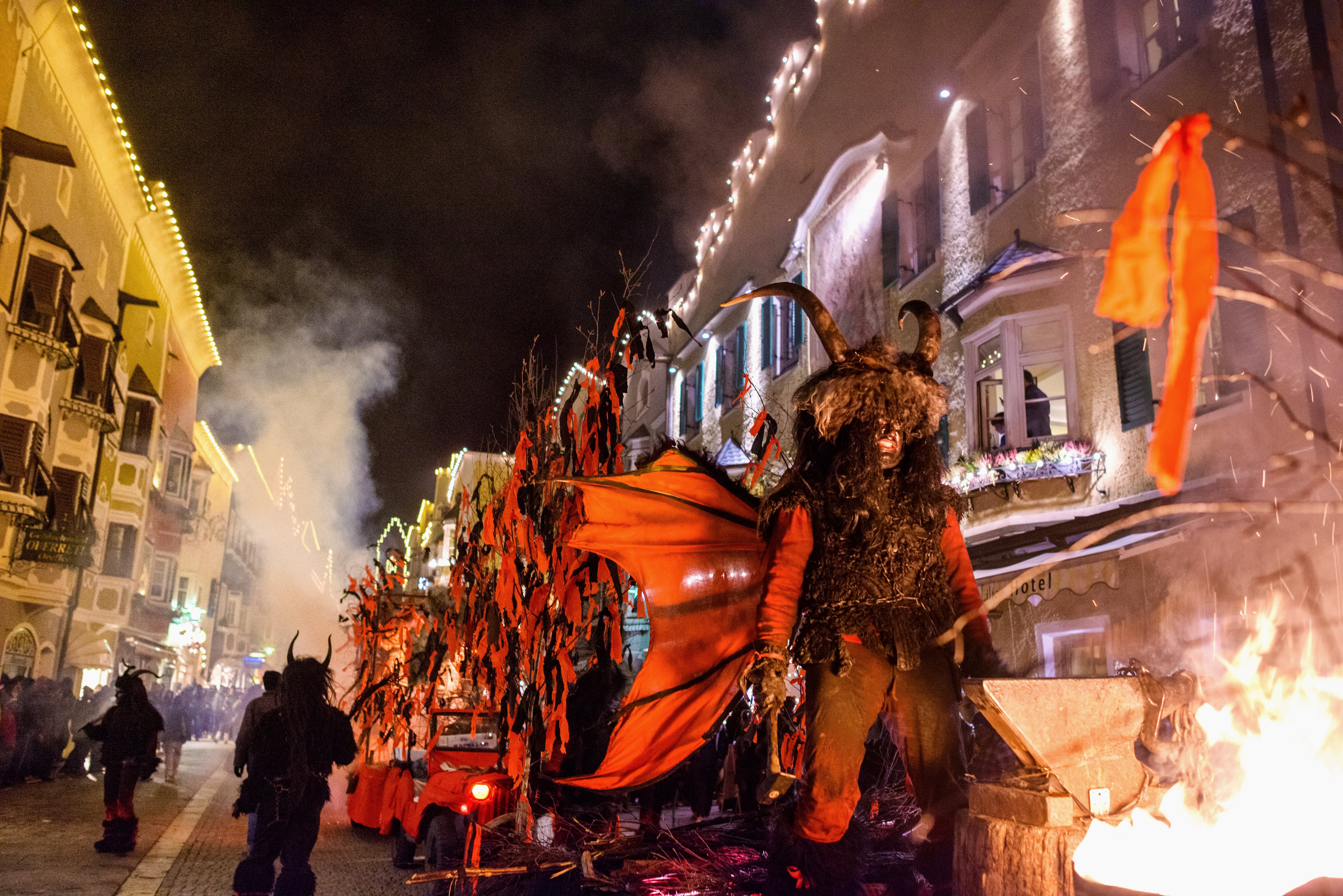
Krampuslauf, or Krampus Run, has had recent growth in popularity in countries like Austria, Germany, Hungary, and the Czech Republic, putting the public’s love (or dread) of Krampus back on the streets to be celebrated.
This parade, usually practiced on Krampusnacht, invites people to dress up in their scariest Krampus costumes, complete with goat fur, long horns, hand crafted weapons, and whatever else their imagination, and craftsmanship, can afford them.
Even in freezing cold temperatures they march on, teasing onlookers and injecting the fear of Krampus into their hearts. They are often joined by revelers, young and old, costumed or not, as they share in their fascination with the “dark Santa,” as well as the traditions that he represents.
Not unlike a Halloween parade, these spectacles are a sight to see, and every year the costumes and theatrics are expanded and intensified, making it one of the most exciting events of the year in many cities and villages across Europe. And it doesn’t end there.
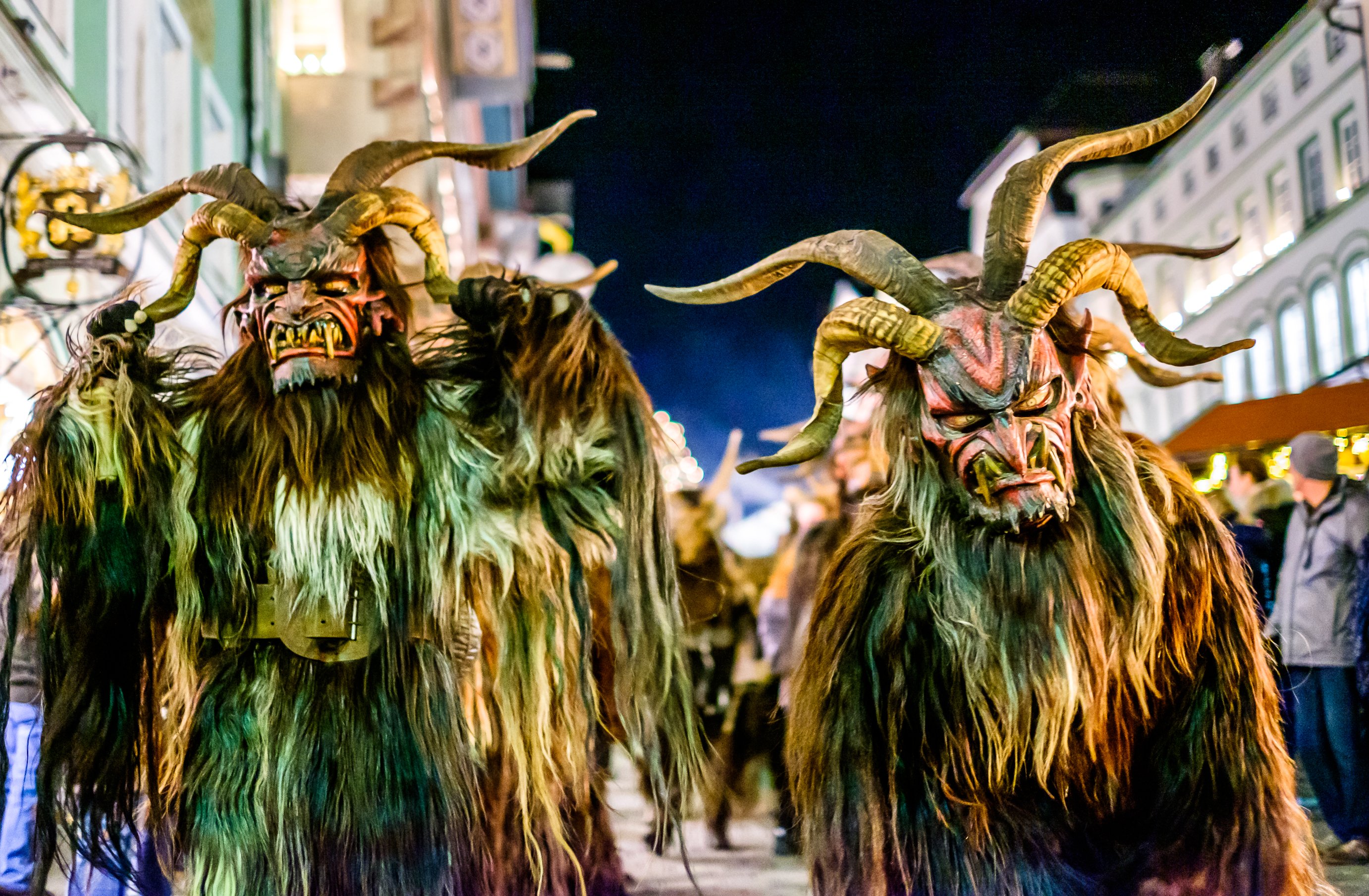
Since the early 19th century, central European countries have celebrated the season with an unusual custom, one that may seem somewhat similar to our own beloved tradition of exchanging Christmas cards with good tidings, but with a much darker twist.
Krampuskarten, or Krampus cards, are holiday cards that feature the cloven-hoofed fiend himself, often shown threatening small children with his birch switch, or even violently abducting them and carrying them away in his sack.
Usually containing humorous rhymes or poetry, not to mention the occasional bawdy or buxom lass, it is not unusual to find over-the-top sexual innuendo or other adult themes that harken back to an era when Christmas had a dark and sordid side.
These gruesome greeting cards have since become perfect stocking stuffer for the strange and unusual among us, and while they may not have taken off at Hallmark, they have become a popular alternative to many people who appreciate the Krampus lore.
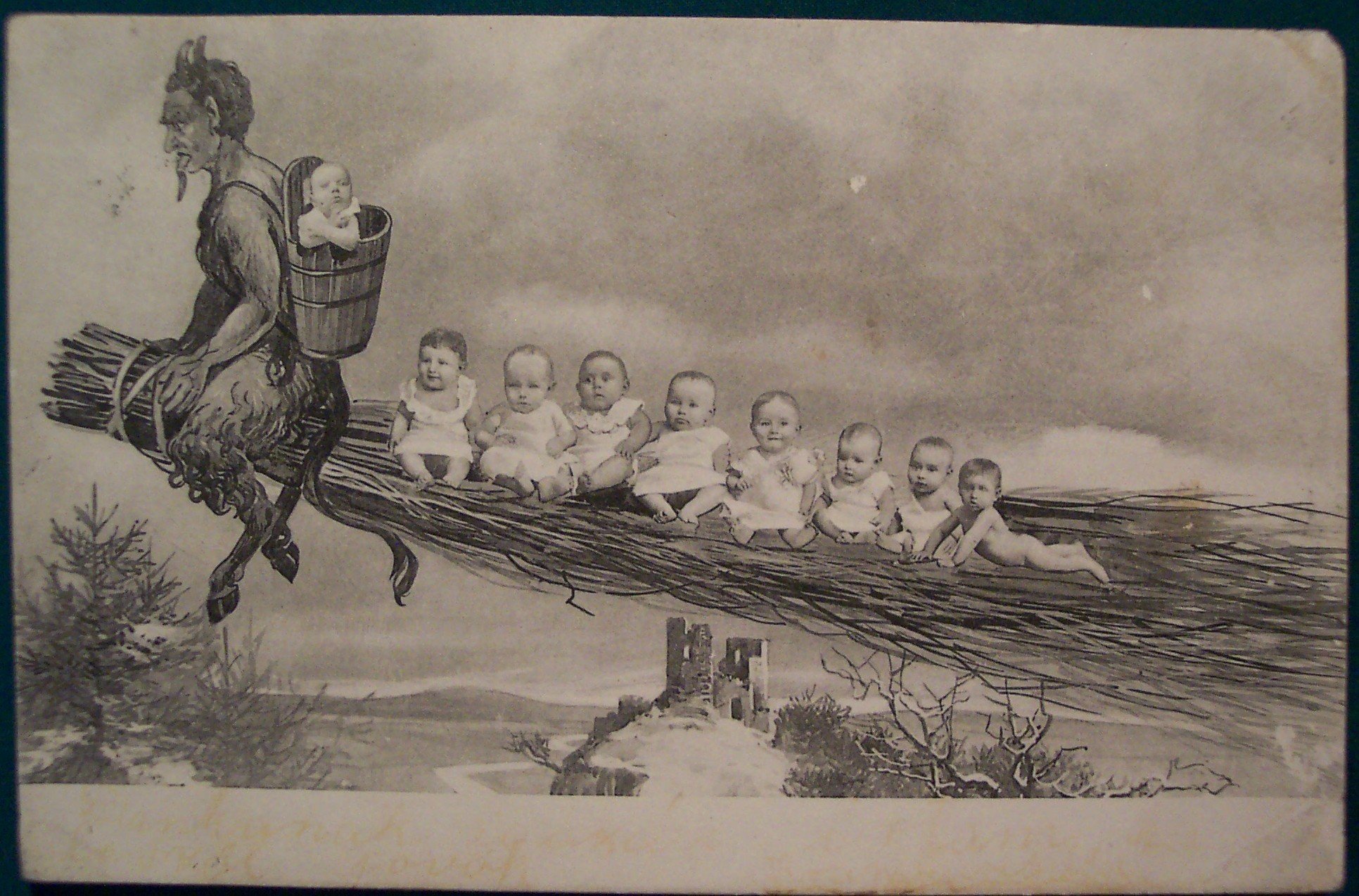
Whether or not Krampus poses a threat to today’s children, there is no doubt that his legend will live on, a reminder of a time when Christmas was more than just holiday cards, cookies and milk, and a jolly old man who brings joy to every boy and girl.
In fact, as far as we are concerned, the world could use a little more Krampus in it because the Christmas we celebrate now is but a shadow of its former self, which has a macabre history as rich as it is terrifying and puts our candy-coated Halloween to shame.
So, be sure to celebrate the roots of this festive holiday, both the light and the dark, and remember that while it is always nice to reward the good, it can be much more fun to punish the wicked. Especially on Krampusnacht.